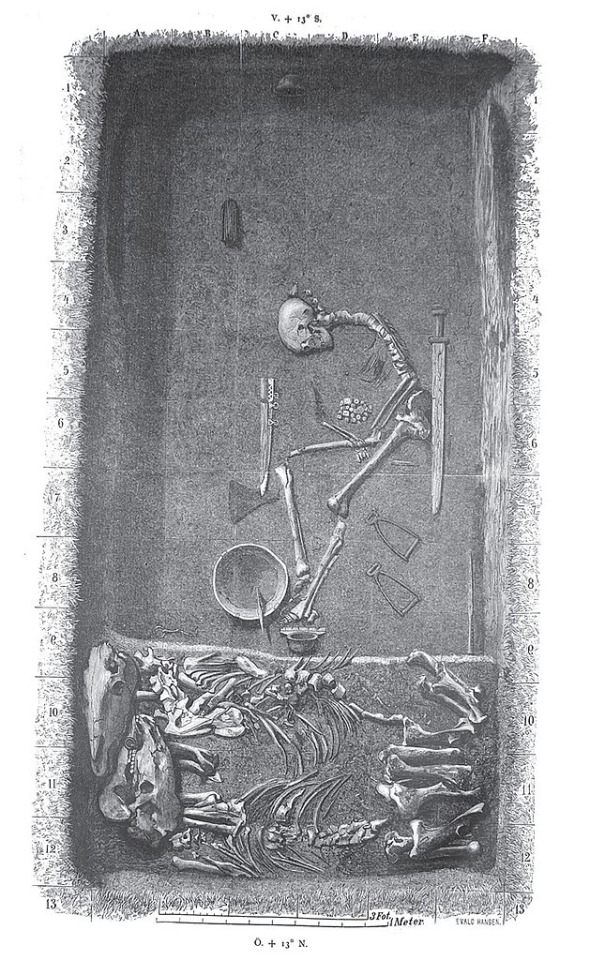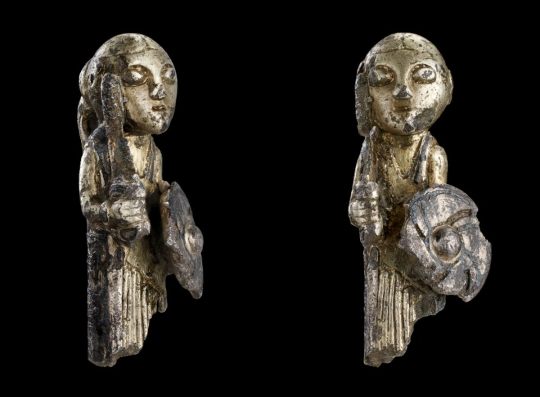#stolpe
Explore tagged Tumblr posts
Photo

Stolpe, Usedom - Foto: Sushi Pedals
5 notes
·
View notes
Text
vimeo
BORDERLAND: artist research month hosted by ponderosa stolzenhagen
research & showing (excerpts)
jakob klaffs, 6.2024
with support from museum angermünde
0 notes
Text



Burn All My Letters (2022)
#bill skarsgård#bill skarsgard#burn all my letters#bränn alla mina brev#sven stolpe#filmedit#moviegifs
138 notes
·
View notes
Text

Stolp Starlet seen at the Coolidge Az Fly-In
#Stolp Starlet#SA-500#Stolp#Starlet#plane#kit plane#experimental#aircraft#amateur built aircraft.#Coolidge Airport#Arizona#Fly In#airplane
7 notes
·
View notes
Text





18 notes
·
View notes
Text

SFX makeup for Burn All My Letters via @themakeupdesigners on IG
70 notes
·
View notes
Note
i miss my wife
wheres your wife boy
7 notes
·
View notes
Photo

Fcklck Studio / Stolp / Packaging / 2020
4 notes
·
View notes
Text

STOLP - now SŁUPSK in Pommern, Poland.
0 notes
Text

"Fourchettes" attribuée à Stolp en ambre, argent doré et acier (circa 1650) à l'exposition "Ambre, Trésors de la Mer Baltique du XVIe au XVIIIe siècle" à la Galerie Kugel, Paris, décembre 2023.
0 notes
Text
Birka’s warrior woman

This grave was found on Birka (Björko) in 1878. The grave contained human remains, remains from two horses, bowls, weaponry, a shield(boss), a chess game and saddle stirrups. The burial room was built in wood. Most likely the person was buried seated, with the bones collapsing on themselves. Some remains of textile were found.
The assumption that the person was a man was quickly made and the “high status burial of a Viking warrior” was often cited in research.
It would take until 2017 when both osteological and genetic testing proved the person was in fact a woman. To this day it is the only genetically and archaeologically proven female warrior from the Viking age.
The reason I say genetically AND archaeologically is because it is assumed that gender was a very loose concept in the Germanic age. Biological gender wasn’t necessarily denied, but there are indications that people would take on “the role” of the other gender. A woman could “step up” as a man’s son, as seen in blood feud tales where the patriarch is killed, but if there is no son to avenge him, a woman would “take up the role” and set out, armed for revenge.
Biologically male individuals have been found with “female” attributes such as beads, pendants and certain decoration styles.
From the limited amount of research there is, it seems possible that cross-dressing, gender fluidity and gender role exchange were very normal before mass christianization.
Excavated by: Hjalmar Stolpe
Found in: Birka, Björko, Ekerö - Sweden
Drawing by: Hjalmar Stolpe
#frankish#merovingian#viking archaeology#archaeology#carolingian#charlemagne#field archaeology#viking mythology#merovingian archaeology#germanic mythology#valkyrie#Walküre#Wagner#richard wagner#norse mythology#anglo saxon#field archaeologist#frisian#viking#vikings#germanic#germanic folklore#germanic archaeology#odin#wodan#anglo saxon archaeology#history#jewelry#norse
330 notes
·
View notes
Text

A child's doll believed to be from the wreck of the North German Llloyd Liner S.S. Deutschland, c. 1875
On 4 December 1875, the Deutschland left Bremerhaven for the USA with 99 crew members and 135 passengers. The captain was Eduard Brickenstein; the passengers were emigrants of various nationalities. On 6 December, the Deutschland deviated from its course through the English Channel due to navigational errors during a storm and ran aground on the Kentish Knock sandbank in the Thames estuary, around 40 kilometres off Harwich, at around 5 o'clock. Fifty-seven people died. The survivors were rescued by the Liverpool after 31 hours. Only twelve of the bodies were recovered.
Although the accident had occurred in international waters, Captain Brickenstein was brought before a maritime court in Great Britain, which led to disagreements with the German Empire and was subsequently used as an opportunity to establish the German Maritime Offices.
Eduard Brickenstein testified before the maritime court that shortly before the ship ran aground on the sandbank, a strong impact was felt through the ship's hull, which led him to assume that the propeller's drive shaft had been damaged by the abrupt change in its direction of rotation to ‘full power back’ shortly beforehand. However, this statement was apparently not taken into further consideration by the maritime court. More recent enquiries have not yet led to any evidence that this assumption is correct. Taking into account the decisions he made during and after the accident and which the maritime court found to be correct, Brickenstein was acquitted. However, as he had contributed to the accident through his navigational errors, this was only regarded as a ‘second-class’ acquittal. Eduard Brickenstein never went to sea again.
The only officer of the Deutschland to lose his life in the accident was Otto Tramnitz, who had been 2nd officer on the Germania during the Second German North Polar Expedition in 1869/70.
Among the emigrants who lost their lives were five Franciscan Sisters from Salzkotten (FCJM), including Henrika Faßbender. The suffering of these nuns moved the British poet Gerard Manley Hopkins, a Jesuit, to write the ode The Wreck of the Deutschland. Hopkins asks why God had tested the Franciscan nuns, who had been forced to emigrate as a result of the Kulturkampf, a second time.
The surviving emigrants of the Deutschland, on the other hand, were lucky a second time. Eight days after their rescue in Southampton, they should have boarded the next steamship, the Mosel, and travelled to America. However, an insurance fraudster planned to sink the Mosel in the Atlantic with a time bomb. However, the bomb exploded prematurely in Bremerhaven due to an accident during loading of the Mosel.
In 1969, a wreck was found near the site of the shipwreck of the Deutschland on the north-west side of Kentish Knock at a depth of around 14 metres (position ♁51° 40′ 0″ N, 1° 37′ 0″ OKoordinates: 51° 40′ 0″ N, 1° 37′ 0″ E | | OSM). Although it could not be clearly identified as that of the Deutschland, findings made by underwater archaeologist Andreas Stolpe in 2005 indicate that it could be the wreck of the Deutschland.
52 notes
·
View notes
Text

Starduster SA100 lifting off from KTHA
#Biplane#sport plane#kit plane#homebuilt aircraft#Stolp#SA-100#Starduster#general aviation#flying#airplane
25 notes
·
View notes
Text
Bill as Sven Stolpe in Burn All My Letters
#bill skarsgård#bill skarsgard#the amount of times i had to#listen to this song#good lord#not perfect but happy w this edit :)
126 notes
·
View notes
Text
As modern science and better archeology methods reexamine historical sites more of women’s history will emerge
by Sarah Durn September 27, 2021

The National Museum of Stockholm's Ride of the Valkyries was painted during the Victorian period, which saw renewed interest in Vikings. Fine Art Images / Heritage Images / Getty Images
In Atlas Obscura’s Q&A series She Was There, we talk to female scholars who are writing long-forgotten women back into history.
In 1871 on the sleepy island of Birka, Sweden, Hjalmar Stolpe, a Swedish entomologist turned archaeologist, discovered the lavish grave of a Viking warrior. Around the seated body were the remains of two sacrificed horses, as well as a double-edged sword, a scramasax (a long, thin knife), a bow, a shield, and a spear��every weapon known to the Viking world. It was an astonishing find, especially since Viking warrior graves rarely contain more than three weapons. There was also a full set of hnefatafl, the board game often known as Viking chess, which indicates the strategic thinking and authority of a war leader. A thousand years ago, the site would’ve abutted the Warrior’s Hall, where a garrison lived to protect the bustling Viking town of Birka. The weapons, game pieces, location: Everything told scholars that the man buried in what is known as grave Bj 581 was a prominent, well-respected Viking warrior. No one was really prepared when DNA tests were conducted in 2017 and a new story began to emerge. This was a prominent warrior, all right, but the occupant of Bj 581 wasn’t a man. She was a woman.

Viking historian Nancy Marie Brown’s new book, The Real Valkyrie: The Hidden History of Viking Warrior Women, explores what life might have been like for the warrior woman of Bj 581.
Using more evidence from the recent tests conducted on the remains, Brown traces her journey from Norway to the British Isles to Kiev then, finally, to Birka. Brown imagines the unnamed warrior meeting other prominent Viking women, such as Gunnhild, Mother of Kings, or Queen Olga, ruler of the Rus Vikings in Kiev. She also explores the Viking sagas and contemporary sources with a new lens.
How did you initially get interested in Vikings—and female Vikings in particular?
When I went to college, I actually wanted to study fantasy writing and, you know, learn to write like Tolkien. I learned very quickly that that was not appropriate for an English major in the 1970s, so I decided to study what Tolkien studied, and he was a professor at Oxford University, teaching Old English and Old Norse. So I started reading all of the Icelandic sagas that I could find in translation. And when I ran out of the English versions, I learned Old Norse so that I could read the rest of them.
One of the things I liked about [the sagas] the most was that they had really interesting women characters. There’s a queen in Norway who appears in about 11 sagas, Queen Gunnhild, Mother of Kings. She led armies. She devised war strategy. And then I was looking at the valkyries and the shieldmaids and thinking, you know, these are really interesting people that have always been considered to be mythological.
So when I learned in 2017 that one of the most famous Viking warrior burials turned out to be the burial of a woman, that just absolutely dazzled my imagination.
Is this the first confirmed grave of a female warrior that we have?
This is the one that has the best proof. There are one or two others that have since been DNA tested and proven to be female. But in each of these cases, it’s hard to say if the person in the grave, whether male or female, actually was a warrior, or if the object that we are interpreting as a weapon was used for hunting or for some other purpose.
In this case, it’s every Viking weapon known to history. So it’s such a clear result. And the DNA was so completely female.

When Stolpe discovered the Viking gravesite Bj 581 in 1887, he assumed the remains were of a man. That assumption was shown to be wrong 140 years later. Rapp Halour / Alamy Stock Photo
What do we know about the life of the Viking warrior woman in Bj 581?
In 2017, by testing her bones and her teeth, [scholars] could say she was between 30 and 40 years old when she died. They could also tell that she ate well all of her life. So she came from a rich family or maybe even a royal one. She was also quite tall, about 5’7”. By the minerals in her inner teeth, [scholars can determine] she may have come from southern Sweden or Norway, and also that she went west maybe as far as the British Isles before her molars finished forming. She didn’t arrive in Birka until she was 16.
We also have her weapons and a little bit of clothing that were found in the grave. And these link her to what is known as the Vikings’ East Way, which was the trade route from Sweden to the Silk Road.
We can link, through the artifacts and through the bones, that she could have traveled from as far west as Dublin to as far east as at least Kiev in the 30 to 40 years of her life.
How do we know that there were Viking warrior women?
They are mentioned many, many, many times in the literature. In most cases, they have been dismissed as mythological because, of course, we know warriors were men. But we don’t know that. That is an assumption that is based on traditional Victorian ideas that because women are mothers, they’re nurturing, they’re peacemakers, and they don’t fight.
That’s not historically true. Women have always fought. And they appear in most cultures until the 1800s, when Viking studies and archaeology pretty much started. So we sort of have this problem of bias in our earliest textbooks.
But now we have actual scientific proof of one warrior woman in the Viking Age. And as the scientists who did the study say they would be very surprised if she was the only one.

This small female Viking warrior figurine discovered in Harby, Denmark, has been interpreted as a mythological valkyrie. John Lee / National Museum of Denmark
There’s this assumption that the warrior men of myth must have been based on real people, but it’s not the same for the mythical warrior women. Why is that?
It’s just an assumption based on what people think women are like. Most of the material we have from the Middle Ages was written by men, and most of the material we have until the 1950s was written by men, and women are slowly making their way into the field of Viking scholarship. But many of them are still working under the assumptions that they were taught.
I noticed when I went back and reread some of the sagas in Icelandic that there wasn’t this clear distinction between the warrior women being mythological and the warrior men being human. When you actually look at the old Norse text, there’s a lot of words that have been translated as “men” that actually mean “people,” but it’s always been translated as “men” because it’s a warrior situation.
If you’re translating, you have to make decisions and sometimes your decisions have repercussions that you don’t expect, like writing women out of the history.

By the time Hjalmar Stolpe excavated Bj 581, he had become adept at recognizing where graves could be found in the hummocky Birka landscape. WS Collection / Alamy Stock Photo
Is it possible for historians to remove all of those biases?
No, I don’t think it is. I think we all are looking through our own lenses. But we have to revisit those sources every generation to see past biases. So when you have layer after layer after layer of removing biases, you may get closer to the truth.
What most surprised you in the course of researching your book?
One of the controversies right now in Viking studies is should we really be talking about men and women at all? Maybe there were all kinds of different genders. We don’t know if there were more than two genders in the Viking age. Maybe it was a spectrum.
If you look at this one group of sagas called the Sagas of Ancient Times that are often overlooked because they have all these fabulous creatures in them, like dragons and warrior women. It’s really interesting [because] these girls grow up wanting to be warriors. They’re constantly disobeying and trying to run off and join Viking bands. But when they do run off and join the Viking band, or, in another case, become the king of a town, they insist on being called by a male name and use male pronouns.
So it was very shocking to me to go back and read it in the original and say, “Wow, all this richness was lost in the translation.”
#Nancy Marie Brown#The Real Valkyrie#Books by women#Books about women#Atlas Obscura#She Was There#Sweden#Birka#grave Bj 581#Warrior women#Vikings’ East Way
22 notes
·
View notes
